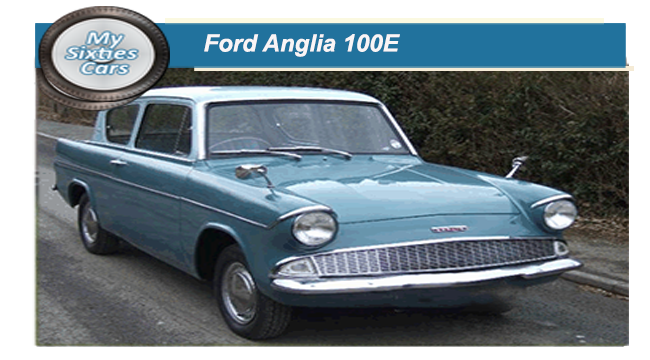
In the mid-Nineteen Fifties, Ford, realising that the UK market was ripe for development invested heavily in research and development, in a site specially constructed for the purpose, in the Midlands city of Birmingham, the heart of the British motor industry.
Until the launch of the Anglia, technically Ford UK had been in a period of stagnation, with three-speed wide-ratio gearboxes, well-proven suspension systems and utter conventionality of design.
D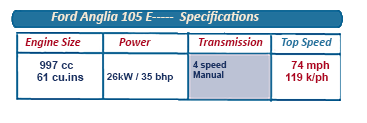 espite the high hopes, only one production model emerged from this creative 'hothouse,’ the model 105E Anglia.
espite the high hopes, only one production model emerged from this creative 'hothouse,’ the model 105E Anglia.
The 105E Anglia saloon made its public debut in September of 1959 - a far cry from any of its predecessors in the " mid-range" sector with its rear wings, reverse rake windscreen, two wide-opening doors, and a large glass area and hooded headlights made the car stand out.
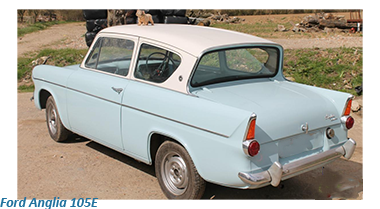 One of the best features of the new Anglia was its engine, a 997-cc over-square, high-revving overhead valve unit which was attached to Ford's first four-speed transmission.
One of the best features of the new Anglia was its engine, a 997-cc over-square, high-revving overhead valve unit which was attached to Ford's first four-speed transmission.
A more expensive "Super" version was introduced not long after that had a longer stroke 1200cc (73 cu in) engine and an all-synchromesh gearbox. Top speed was up to 82 mph, acceleration from 0-50 mph took 14 sec and fuel consumption was still reasonable at 33 mpg.
The 105E Anglia featured a very compact, lightweight, high-revving oversquare engine with much scope for further tuning, mated to a beautifully slick and precise four-speed gearbox with synchromesh on the top three ratios.
![]()
The Anglia came fitted with the classic Ford suspension system, making for a well-balanced and stable integral body/chassis that provided considerable straight line and cornering performance.
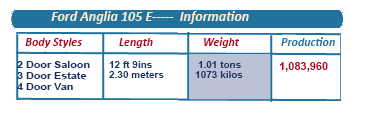
 In August of 1960, the attractive estate car version of the Anglia first rolled off the production lines, to be announced in October. With its upward-opening rear door, the tail sloping to a convex V-shape at waist level, the more aerodynamic shape of this estate gave it a more streamlined appearance than the saloon.
In August of 1960, the attractive estate car version of the Anglia first rolled off the production lines, to be announced in October. With its upward-opening rear door, the tail sloping to a convex V-shape at waist level, the more aerodynamic shape of this estate gave it a more streamlined appearance than the saloon.
Once again Standard and De Luxe versions were offered, the former with a painted, metal-framed wooden floor, and the latter with a laid linoleum floor, alloy rubbing strips, lockable glove box, opening rear quarter-lights and a full-width radiator grille.
But while the Anglia's small 997-cc engine was quite capable in town and motorway driving conditions it could become a little breathless on long and steep hills, and in tight corners when driving hard finding the gap between second and third gears could be a cause of great embarrassment and uncertainty.
![]()
The next Anglia series change was in October 1964, with minor cosmetic changes made.
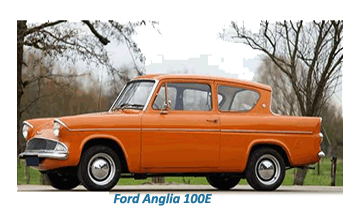 In September 1965 the 1200 De Luxe saloon was removed from the range, this engine only being available from then on in the De Luxe Estate.
In September 1965 the 1200 De Luxe saloon was removed from the range, this engine only being available from then on in the De Luxe Estate. In this format, the 105E and 123E Anglia range ran on until November 1967, when replaced by the Ford Escort Mark I.
The Ford Anglia 105E sold well over one million models during its production run.






